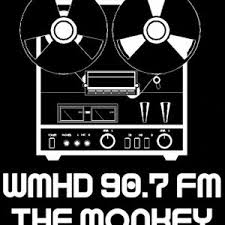Rose-Hulman Institute of Technology in Terre Haute, Indiana has filed paperwork with the FCC in order to assign the 1400 watt FM license for student-run college radio station WMHD 90.7 FM to Indiana State University. According to the asset purchase agreement, the purchase price is $16,465. Based on a recent notice to the FCC regarding suspension of operations, it would seem that WMHD struggled to remain on the air. In its March, 2014 request to the FCC, the school indicates that WMHD has been off the air since September 30, 2013. The request states,
The station is student-run, and has experienced ongoing staffing and coverage issues. To avoid a drain on financial resources, the licensee decided to take the station off-air as it considered its options, which now includes the potential sale of the station to a third-party. Due to administrative oversight, the licensee failed to timely notify the commission of its off-air status.”
Interestingly, WMHD’s application for license renewal was submitted in March, 2012, but not granted until March 27, 2014.
WMHD received its FCC license in 1981. According to a station manual updated as recently as 2007, “The music played on WMHD spans many genres and audiences.” At the time, the station’s focus was on music, including rock, metal, hardcore, electronica, and hip hop.
The purchaser of the WMHD license, Indiana State University, also hold the license for student radio station WISU 89.7 FM in Terre Haute. It’s unclear what Indiana State’s plans are for WMHD and the future of college radio at Rose-Hulman is also unknown.
Station alumnus Jim Grey reported on the news that WMHD was leaving terrestrial radio back in November, 2013. In recounting the station’s history, he writes,
Radio was once a strong drive among Rose-Hulman students. It started in 1969 when students built a carrier-current AM station they called WRTR. The signal ran through the campus’s electrical system; you had to plug your radio into the wall to pick it up. But students dreamed of over-the-air broadcasting on FM. In 1981, after completing a bunch of engineering studies and filling out a pile of FCC paperwork, they got their license.”
As a member of the station in the 1980s, Grey describes a very vibrant free format WMHD. He recalls that,
By the time I reached Rose-Hulman in 1985, WMHD was an active, thriving station. I joined the dozens of students who did weekly two-hour air shifts. There were enough of us that we were on the air from 7 am to 1 am on weekdays, and 24 hours a day on the weekends.”
In a comment to Grey’s piece, someone posting as WMHD states that, “Over the past few years, the amount of students interested in WMHD has dwindled…The past 2-3 years, we have only had 3-5 active students interested in being DJs. It has made things very difficult in terms of programming and funding.”
It’s interesting to note that Rose-Hulman was home to one of the earliest radio station in Terre Haute. The school, then known as Rose Polytechnic Institute, ran station WRPI beginning in around 1927. According to an archived interview with WRPI alumnus Herman Moench, a radio club was active on campus in the early 1920s and a push to obtain a broadcast license began around 1926. According to an entry in the 1926 Rose Polytechnic yearbook Modulus,
THE Rose Club was organized in September, 1923, by a group of interested students to provide a means for the advancement of technical knowledge among the members of the student body who desired laboratory training and actual operating- experience. Although no broadcasting licenses are being issued by the Department of Commerce at the present time, due to the congestion of the broadcasting spectrum, the Club still hopes to eventually obtain permission to install a high-class broadcasting station, in the belief that the resulting publicity would be of real value to Rose.”
WRPI operated from campus for a short time (probably less than a year), with students taking an active part in building and running the station. The station had no studio, but still managed to broadcast basketball and football games. After a short period of time, the students were told by administrators that the students would no longer control the station. Control was transferred to a commercial group and WRPI eventually left campus, with its call letters changing to WBOW.
The 1927 yearbook recounts the successful launch of WRPI, as well as its move off-campus,
DUE to the foresight, and activity of the members of the Club since its organization in 1923, the club scored an important coup when a broadcasting permit was recently awarded to the school broadcasting station. The club was originally organized to further the technical study of at close range, experimental equipment being set up for this purpose. As interest increased, the idea of establishing a broadcasting station spread through the student body and the faculty. Pressure was applied by the Club and by interested backers of the school, and as a result a permit was obtained giving the Rose broadcasting station authority to broadcast under the call-letters WRPI. The station is in the hands of enthusiastic citizens of Terre Haute, and daily broadcasts a program from the studio in the Deming Hotel. A new building to house the broadcasting equipment is in the process of construction on the campus.
By 1931, WRPI was no more. According to the yearbook, “The station now known as WBOW was once indirectly owned and operated by the club, under the call letters WRPI. Due to the fact that so much time was necessary to keep the station running it was finally turned over to a company owning a chain of small stations through-out the state.”
While the future of radio at Rose-Hulman is unclear, the school certainly has a fascinating radio past.
We report on college radio news every Friday in our College Radio Watch column.



